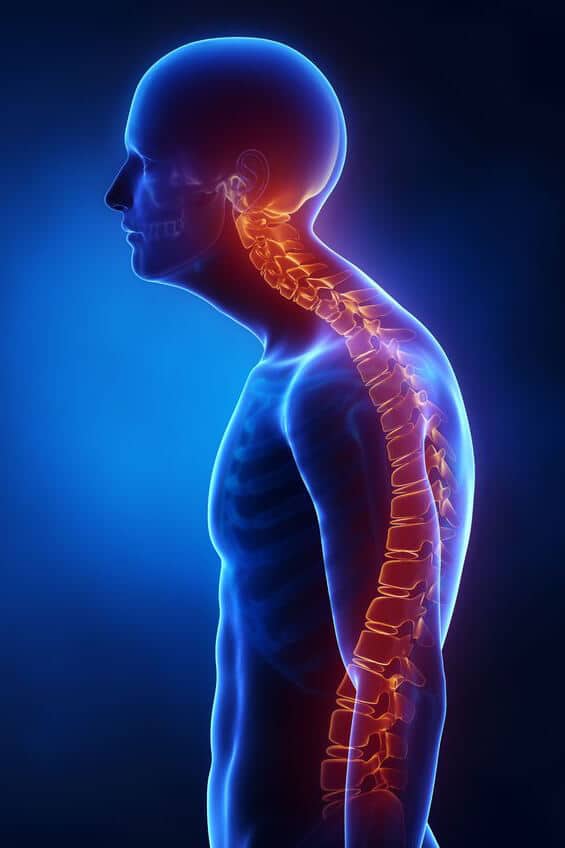Kyphosis is a spinal disorder where there is increased rounding of the upper back due to an abnormal outward curve of the spine. It also is referred to as “round back,” or in more severe cases, as “hunchback.” It can often be seen in older adults, particularly women, though it can occur at any age.
Kyphosis

What is Kyphosis?
What Causes It?
Sometimes kyphosis is a result of poor posture. Other cases arise from injury, cancer (bone cancer, for example), or disorders such as Paget’s disease or osteoporosis. Sometimes kyphosis is congenital, in which the spine’s normal development is affected before birth. Other times it is due to the vertebrae not developing correctly as a person grows; since kyphosis can run in families, there may be a genetic link, but this does not explain why it happens to people whose families don’t have a history of kyphosis.
What Are The Symptoms Of Kyphosis?
Aside from the excessive curvature of the thoracic spine, the symptoms of kyphosis include back pain and stiffness. If it is caused by a problem with the structure of the spine, such as with Paget’s disease, spinal injury, cancer, or congenital kyphosis, other symptoms may be present. However, mild cases of kyphosis may present with no symptoms at all.
Diagnosing Kyphosis
X-rays of the spine can determine if you have kyphosis. This is only the start, though. For treatment to be effective, the exact cause of it must be determined. You may be asked to do specific exercises during the exam to see if your balance and range of movement are affected. If you have developed kyphosis in adulthood, you may need to undergo additional testing based on whatever other symptoms you have, such as a blood test or a bone density scan. CT and MRI scans may also be used to rule out possible causes.
Treatment For Kyphosis
Treatment will depend on how curved the spine is including whatever caused it in the first place. For young children and teenagers, treatment may consist of a back brace which limits the progression of kyphosis as they grow. Kyphosis caused by poor posture can be treated by doing exercises which improve posture and strengthen the muscles of the lower back. Only in very severe cases is surgery recommended, because the benefits of the procedure should be judged to outweigh the risks. If surgery is done, expect to stay in the hospital for up to a week; you may also need to wear a back brace for up to nine months to support your spine while it heals.
Exercises for Kyphosis, Rounded Back
Posture Exercises
Prognosis
The prognosis for most cases of kyphosis is very good. With a mix of physiotherapy, exercise, and medication, patients recover well. Even when surgery is done, patients can resume normal activities following a full recovery.
How Can You Prevent Kyphosis?
To prevent postural kyphosis, be mindful of how you carry yourself and whether you tend to slouch when sitting. Do exercises to keep your back muscles strong and encourage yourself to maintain good posture. Eat as healthy a diet as possible, so your bones get the nutrition they need. There is no real way to prevent congenital kyphosis, so early detection of the condition is critical for managing and correcting the problem.

New Client Offer - 10% OFF
Are you in pain? Not sure if we can help you?
Book your initial appointment and receive 10% off any service!